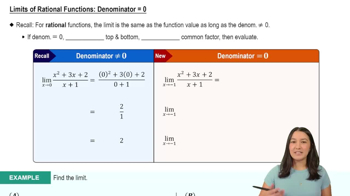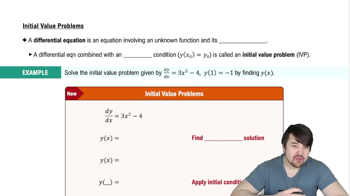Here are the essential concepts you must grasp in order to answer the question correctly.
Limit of a Function
The limit of a function describes the behavior of that function as its input approaches a certain value. Formally, we say that the limit of f(x) as x approaches a is L if, for every small positive number ε, there exists a corresponding small positive number δ such that whenever 0 < |x - a| < δ, it follows that |f(x) - L| < ε. This concept is fundamental in calculus as it lays the groundwork for continuity and differentiability.
Recommended video:
Limits of Rational Functions: Denominator = 0
Limit Properties
Limit properties are rules that allow us to compute limits of functions more easily. One important property is that the limit of the difference of two functions is the difference of their limits, provided both limits exist. This means that if lim(x→a) f(x) = L and lim(x→a) g(x) = M, then lim(x→a) (f(x) - g(x)) = L - M. Understanding these properties is crucial for proving statements about limits.
Recommended video:
Proof Techniques in Calculus
Proof techniques in calculus involve logical reasoning to establish the validity of mathematical statements. Common methods include direct proof, proof by contradiction, and the epsilon-delta definition of limits. In the context of limits, one often uses these techniques to rigorously demonstrate that a limit exists or to derive relationships between limits, such as proving that the limit of a difference equals the difference of the limits.
Recommended video:
 Verified step by step guidance
Verified step by step guidance Verified video answer for a similar problem:
Verified video answer for a similar problem:



 6:47m
6:47m